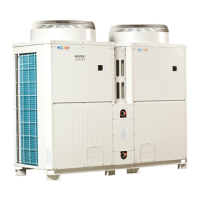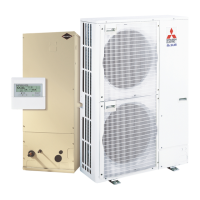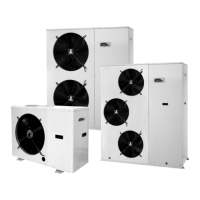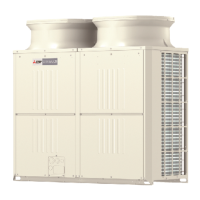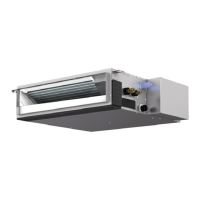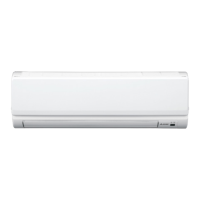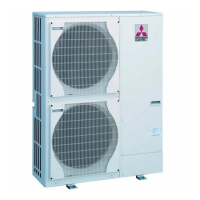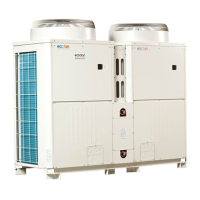
Do you have a question about the Mitsubishi Electric CAHV-P500YB-HPB and is the answer not in the manual?
| Model | CAHV-P500YB-HPB |
|---|---|
| Category | Heat Pump |
| Refrigerant | R410A |
| Sound Pressure Level (Outdoor Unit) | 64 dB(A) |
| Series | City Multi |
| Heating Capacity (kW) | 56.0 |
| Power Supply | 380-415V, 50Hz |
General safety precautions and warnings for unit operation, installation, and handling.
Safety precautions related to moving, installing, and handling the unit.
Safety guidelines for refrigerant piping and electrical wiring to prevent hazards.
Safety notes for unit inspection, repair, and general operation.
Overview of servicing, necessary tools, materials, brazing, and leak testing.
Procedures for refrigerant charging, leak remedies, and refrigerating machine oil information.
Comparison of conventional and new refrigerants, including chemical and pressure properties.
Guidelines for system configuration, sample installations, and water pipe installation.
Restrictions on cable types, lengths, power supply wiring, and switch configurations.
Steps for configuring individual and multiple systems using switches.
Procedures for re-initializing and resetting the system after configuration changes.
Notes on pipe corrosion, water quality, suspended solids, and pipe connections.
Guidelines for water flow rates and maintaining the water circuit.
Overview of unit components and the refrigerant circuit diagram.
Diagrams and descriptions of control boxes and unit circuit boards.
Diagrams and details for specific boards like M-NET, INV, Fan, and Noise Filter.
Using the remote controller for starting, stopping, mode selection, and function settings.
Setting water temperature, day/time, and using timer functions (Weekly, Simple, Auto-Off).
Complete electrical wiring diagram with explanations of symbols and I/O signals.
Diagram of the refrigerant circuit and functions of principal parts.
Explanation of dip switch functions, factory settings, and their usage.
Unit operating characteristics, control capabilities, and modes.
Priority of input signals, system configuration, and analog input settings.
Setting scheduled operations, peak-demand control, and booster heater conditions.
Water temperature control methods and automatic pump operation for freeze-up protection.
Items to check before performing a test run, including leaks and insulation resistance.
Methods for performing test runs and operating the unit.
Information on refrigerant and standard operating characteristics for reference.
Procedures for checking error histories and maintenance logs.
Troubleshooting guide for unit malfunctions, error codes, and sensor checks.
Troubleshooting specific components like the inverter, fan, and control circuit.
Treatment for breaker trips and procedures for replacing major parts.
Troubleshooting specific components like LEVs and thermistors.
A reference table for R407C saturation pressures and temperatures.
